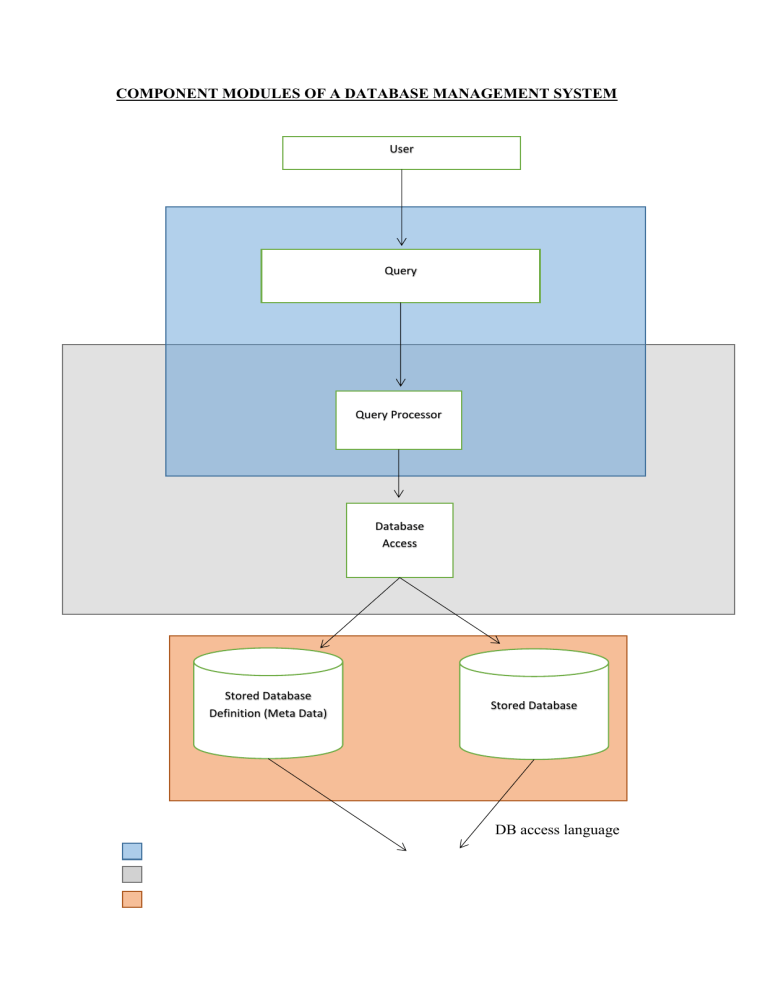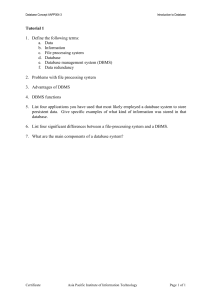
COMPONENT MODULES OF A DATABASE MANAGEMENT SYSTEM User Query Query Processor Database Access Stored Database Definition (Meta Data) Stored Database DB access language Key Procedures Data Software Data Manager A database management system (DBMS) is a collection of programs that enables users to create and maintain a database. It is a general-purpose software system that facilitates the processes of defining, constructing, manipulating, and sharing databases among various users and applications. Component modules of a DBMS are; Hardware - The set of Physical electronic devices involved before any data is successfully stored into the memory. The Hard Disk, Keyboard, RAM and ROM are all part of the DBMS hardware. They provide the interface between computers and the real world systems. Software - The DBMS software is the set of programs used t control ad manage the overall database making it the main component. It provides an interface that can easily be used to store, access and update data and understands the Database Access Language and interprets it into actual database commands that are executed in the database. Data - This is the resource a DBMS is designed for. The users saved Data is stored in the stored database and meta data is stores data about the data itself like the date and time of storage. Procedures - These are general instructions to use a database management system. These include the setup and installation of a DBMS, logging in and out of the DBMS software, management of databases, taking backups and generating reports. Procedures guide users that operate and manage the DBMS. Query Processor - transforms user queries into a series of low level instructions. It reads queries and translates them into a efficient series of operations in a form that the run time data manager can execute. Run time Database Management - this is the central software component of the DBMS that interfaces with user submitted queries and handles database access at run time. It converts operations in user queries and provides control to maintain security, integrity and consistency of data. Data manager - responsible for handling data in the database. Provides recovery to the system after failure. Database Access Languages - This is a simple language designed to write commands to access, insert, update and delete data stored in any database. A user writes a set of appropriate commands in the Database Access Language and submits it to the DBMS for execution where it is translated and executed by the DBMS. A set of results is generated and displayed to the user form. Users can create new databases, tables, insert data, fetch stored data, update data and delete the data using the access language. User - can either be the database administrators, software developers or end users. Database Administrators manage the complete database management system and take care of the security of the DBMS, it's availability, manage the license keys and user accounts and access. Software Developers develop and design the parts of a DBMS. End Users store, retrieve, update and delete data.


